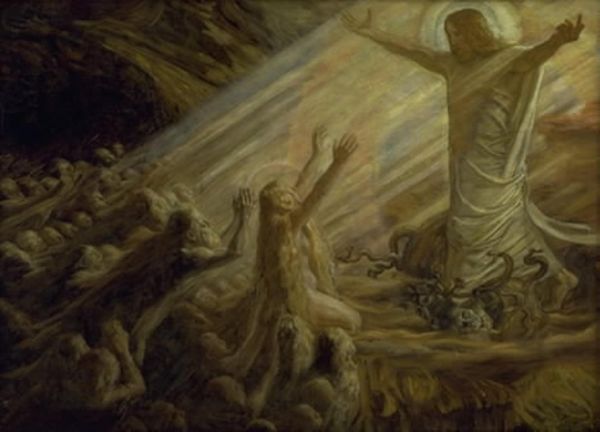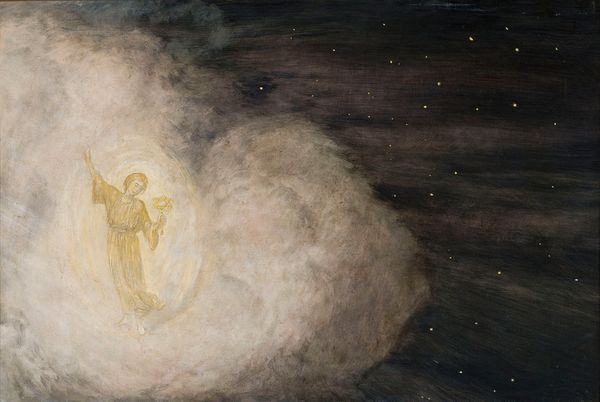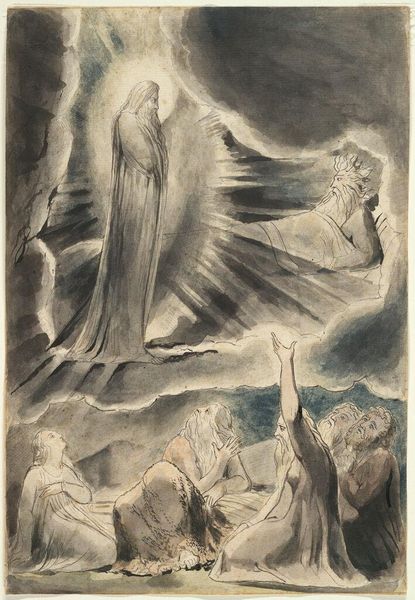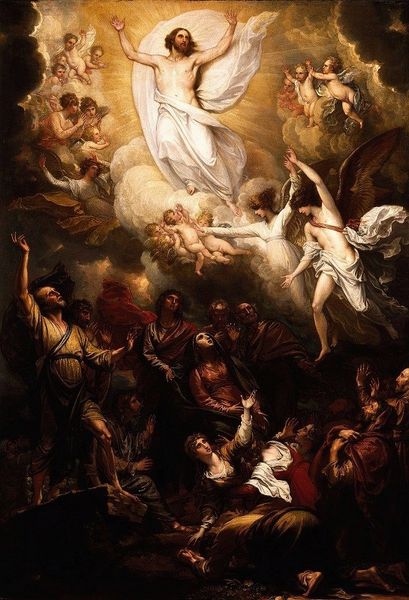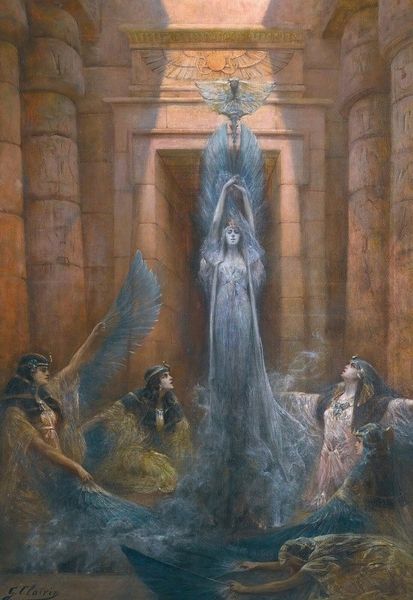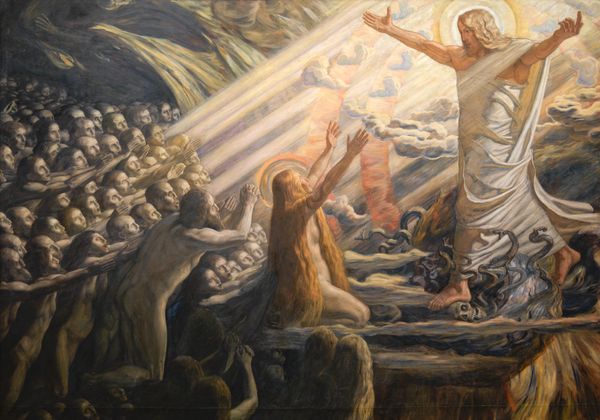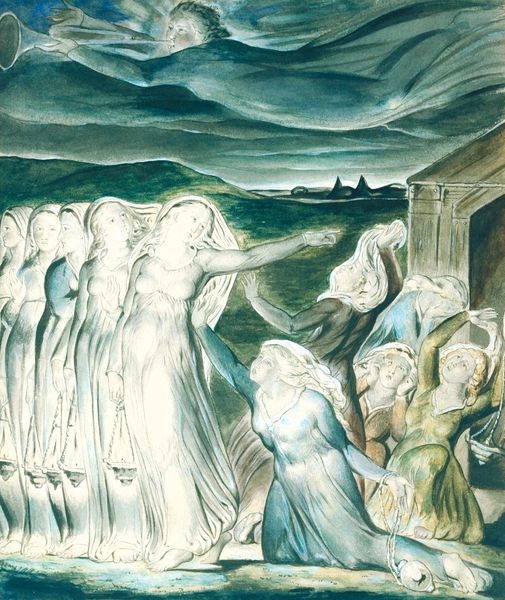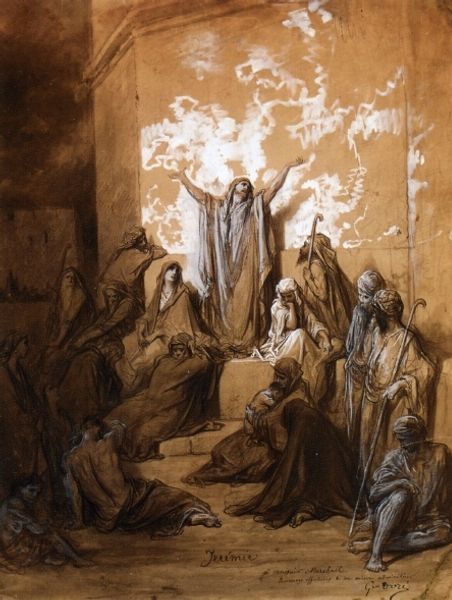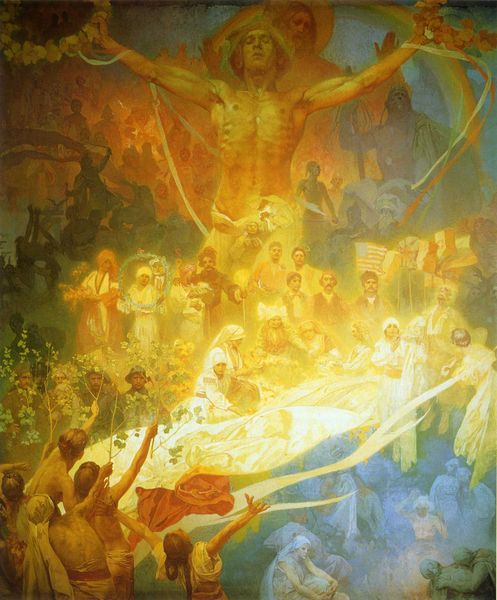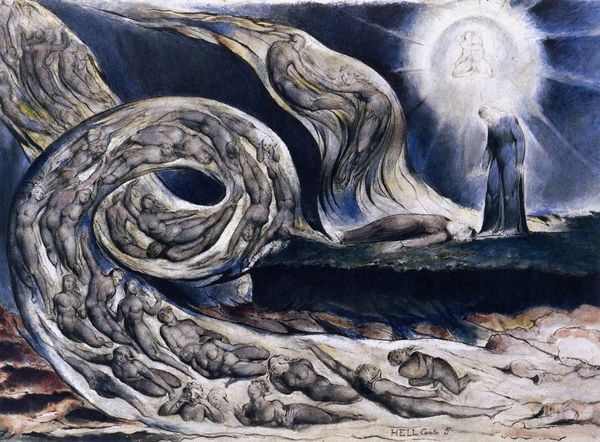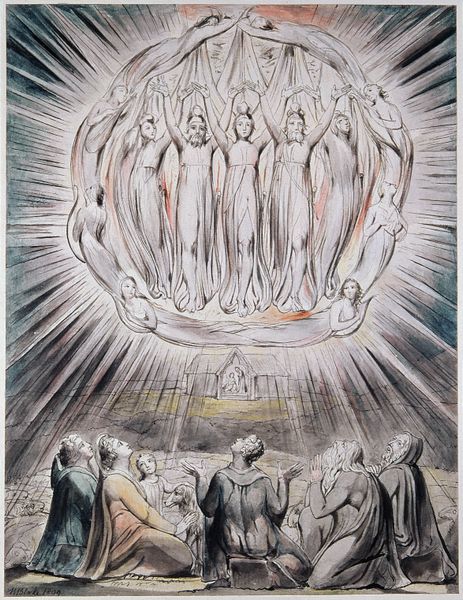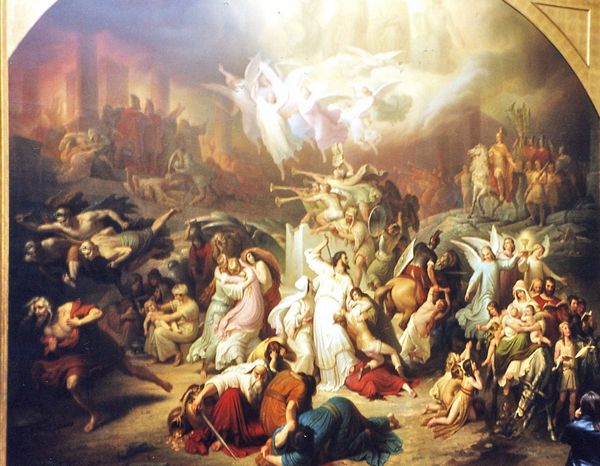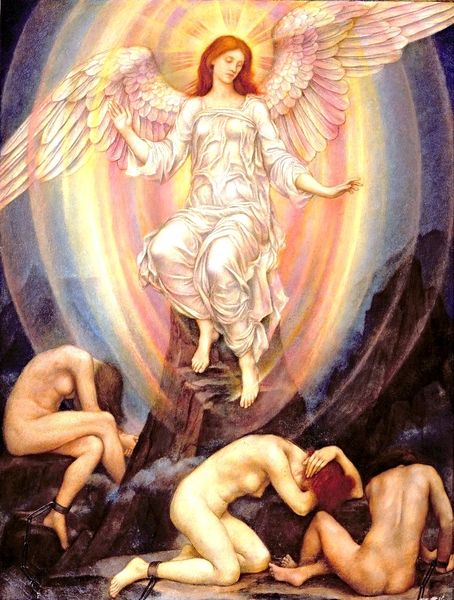
Copyright: Public Domain: Artvee
Curator: Albert Edelfelt’s 1899 charcoal drawing, "Revelation of Angels to Shepherds", offers us a fascinating glimpse into a popular biblical scene through a Romantic lens. Editor: Wow, it just sweeps you away, doesn’t it? The angel practically vibrates with light, and you can almost feel the shepherds’ awe. It’s so… dreamlike. Curator: The use of charcoal allows Edelfelt to manipulate light and shadow so masterfully, right? Consider how the luminosity of the angel is achieved not just through highlighting but by contrasting her against the darker, earthier tones of the shepherds. Charcoal as a readily available and inexpensive material allowed the production of studies and preparatory drawings, informing larger, possibly oil painted, finished works. Editor: I keep thinking about that angel, the way she seems both solid and ephemeral. It makes me wonder, did Edelfelt believe in angels? Was he trying to capture something real, or just the feeling of divine intervention? There is a definite emotional intensity at work here. Curator: Well, this piece arrives towards the tail end of Romanticism, so it would have spoken to ideas about intense subjective feeling and perhaps sought to capture some form of collective cultural psyche about biblical stories. I find it striking that Edelfelt chose to represent this monumental spiritual moment through the accessible medium of charcoal—bridging high art with everyday materials, highlighting process and making. Editor: True. I'm drawn to how small the shepherds look, literally and figuratively. There's such a sense of human insignificance alongside otherworldly glory. But isn’t it interesting how charcoal can be both so basic and capable of conveying this really elevated spiritual experience? It seems humble, somehow fitting. Curator: Absolutely. In conclusion, by thinking through material choice, and the economic considerations involved, this work invites us to meditate not only on the divine event it portrays but also on art’s capacity to materialize intangible ideas using elemental means, democratizing the very idea of divinity itself through a mass-producible material like charcoal. Editor: Yes, and personally it is Edelfelt's emotional rendering here that stays with me most powerfully: an ethereal glimpse into something ancient, primal, deeply human.
Comments
No comments
Be the first to comment and join the conversation on the ultimate creative platform.
